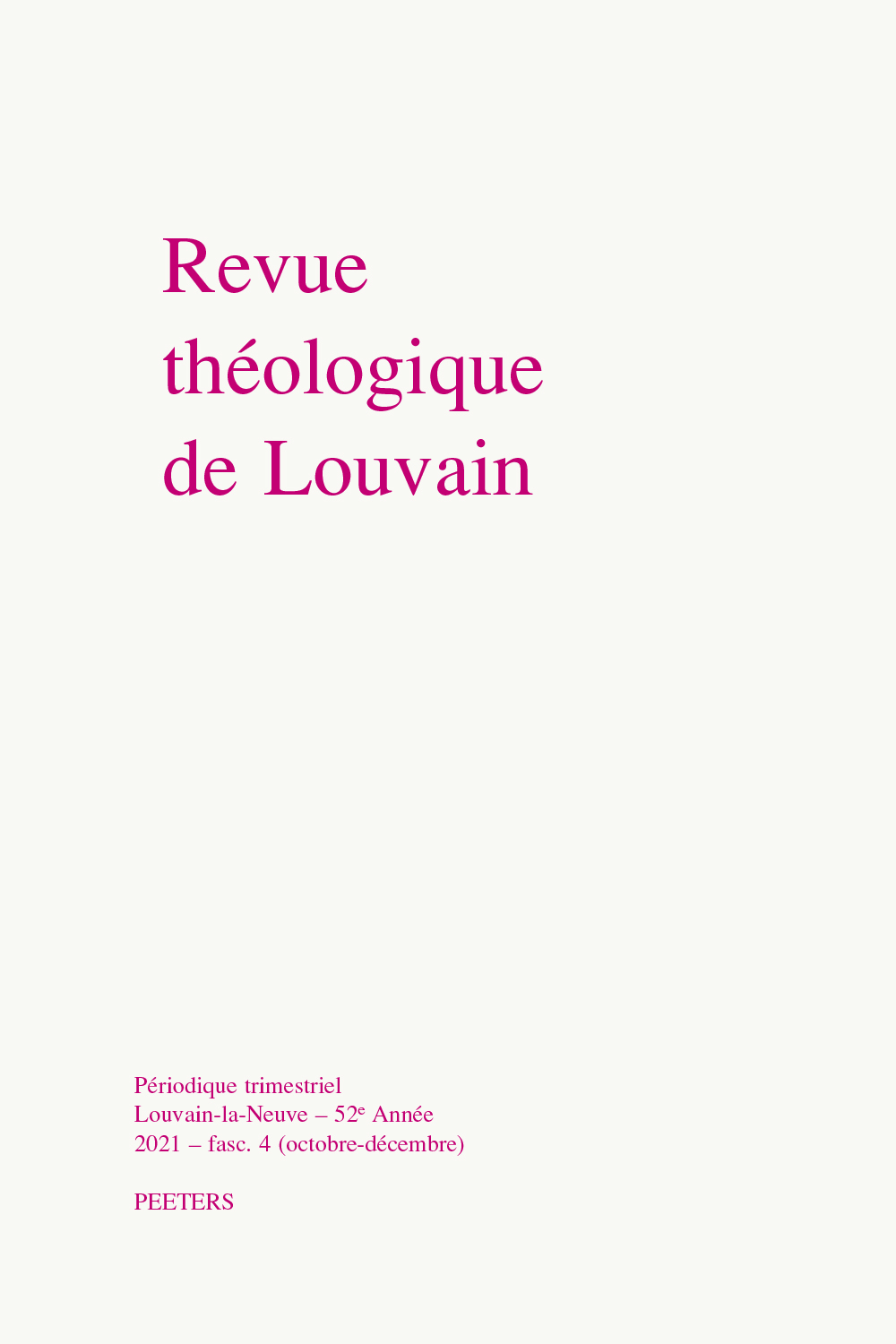 previous article in this issue previous article in this issue | next article in this issue  |

Preview first page |
Document Details : Title: Quelle anthropologie pour inclure la dimension spirituelle aux soins? Subtitle: Perspectives d'avenir Author(s): JOBIN, Guy Journal: Revue Théologique de Louvain Volume: 48 Issue: 4 Date: 2017 Pages: 510-534 DOI: 10.2143/RTL.48.4.3265662 Abstract : L’intérêt que porte la biomédecine à l’expérience spirituelle en temps de maladie est appuyé sur une anthropologie spirituelle, c’est-à-dire une représentation normative de la «structure interne» et des modes d’opération de la vie spirituelle individuelle. Dans cet article, je soutiens la thèse que cette anthropologie spirituelle «biomédicale» est lacunaire. La représentation communément mobilisée dans les discours biomédicaux sur l’expérience spirituelle est muette sur les dimensions anthropologiques fondamentales que sont le langage et la tradition. Par une courte exploration de trois thèmes intimement imbriqués: le langage, la tradition et la temporalité, je veux montrer que l’intégration de ces trois éléments dans la réflexion anthropologique sur l’expérience spirituelle de la personne malade permet d’honorer la particularité de l’expérience individuelle, mieux que ne le fait l’anthropologie spirituelle «biomédicale». The spiritual experience of patients is interpreted by the biomedical and clinical sciences through a spiritual anthropology, i.e. a normative representation of what it is to be a spiritual human being. My thesis is that this normative anthropology, based on the concept of well-being, is incomplete and cannot really understand the fullness of the singular spiritual experience. This normative anthropology is incomplete inasmuch it is mute on such issues as language, tradition, and temporality. By an exploration of those themes, I want to show that attention given to them allows a better understanding of the singularity, as well as the social dimension, of any spiritual experience lived in everyday life and in times of illness. |
|


